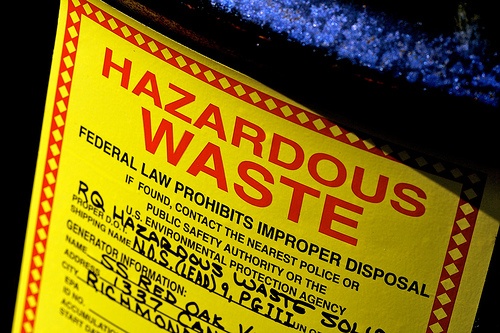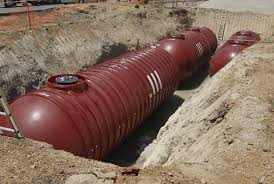Many regulatory laws provide for civil – and sometimes even criminal – penalties for noncompliance. Statutes set penalty levels (“XXX dollars per day of violation” for example), at levels intended to provide meaningful deterrence and punishment for noncompliance. But over time, these penalties' stings decline with inflation. To counteract the possibility that less painful penalties reduce incentives for compliance, U.S. law directs most federal agencies to make annual “cost of living” adjustments to the maximum statutory civil penalty levels (there are no provisions for standing periodic adjustments to criminal penalties).
Read MoreAudit, Compliance and Risk Blog
Jon Elliott
Recent Posts
Federal Agencies Adjust Civil Penalty Levels for Inflation
Posted by Jon Elliott on Wed, Feb 12, 2025
Tags: OSHA, EPA, regulatory registers, RegulatoryUpdates, EnviromentalCompliance, EHSCompliance
During 2024, at least five states considered legislation to enact “Climate Superfund” laws targeting fossil fuel companies, applying “polluter pays” principles enshrined in the US federal Superfund law (Comprehensive Environmental Response, Compensation and Liability Act (CERCLA of 1980) and its many state counterparts. At least two states enacted such laws – Vermont and New York. The rest of this note provides brief summaries of these laws.
Read MoreTags: Environmental risks, Environmental, Greenhouse Gas, climate change, Environmental Projects, Environment, Environmental Policy, Climate, environmental law, environmental protection, Environmental Compliance
WorkSafeBC has amended its regulations to enhance requirements that employers in British Columbia provide first aid in their workplaces. These changes to BC’s Occupational Health and Safety (OSH) Regulation were effective November 1, 2024. The remainder of this note summarizes first aid requirements, highlighting the latest enhancements to direct requirements and to procedural requirements.
Read MoreTags: Health & Safety, Safety and Health at Work, workplace safety, Healthcare, Health and Safety Compliance, WorkSafeBC, OSH
EPA further limits uses of carbon tetrachloride and perchloroethylene
Posted by Jon Elliott on Fri, Jan 10, 2025
The Toxic Substances Control Act (TSCA) includes procedures for the Environmental Protection Agency (EPA) to evaluate risks presented by existing chemicals using the latest scientific information – incorporating information developed after a chemical entered use in the US. Based on these reviews, EPA updates its regulatory requirements, ranging from labeling-only through use restrictions up to and including bans from further distribution and use. (I summarized these review requirements HERE). On December 18, 2024, EPA published restrictions in the Federal Register, for carbon tetrachloride (CTC) and perchloroethylene (PCE), based on its hazard reviews for those chemicals. The rest of this note discusses these new restrictions.
Tags: Environmental risks, Environmental, EPA, tsca, Environmental Projects, chemical safety, Environment, Environmental Policy, Chemical Safety Board, Hazardous Chemicals, Environmental Compliance, EPA Regulations, EPA Standards
EPA adopts management requirements for equipment containing HFCs
Posted by Jon Elliott on Thu, Jan 02, 2025
Effective December 10, 2024, the US Environmental Protection Agency (EPA) adopted rules for the management of hydrofluorocarbons (HFCs) potentially released from equipment during maintenance or other services,
.. These rules support US efforts to implement the 2016 Kigali Amendment to the United Nations-sponsored Montreal Protocol on Substances that Deplete the Ozone Layer (which I wrote about HERE), and codified in the December 2020 coronavirus relief bill (American Innovation and Manufacturing Act of 2020 (AIM Act; which included dozens of unrelated provisions within its 5,593 pages). EPA adopted over-arching HFC phase-down rules in September 2021 (I wrote about them HERE), and continues to adjust and refine their requirements. These latest rules appear in a 191 page document in the Federal Register, finalizing (with revisions) most provisions in a proposal issued in October 2023 (which I wrote about HERE).The remainder of this note summarizes EPA’s new rules, which impose requirements using authority under the Clean Air Act (CAA) and the Resource Conservation and Recovery Act (RCRA).
Read MoreTags: Environmental risks, Environmental, EPA, Environmental Projects, Environment, Environmental Policy, Environmental Compliance
EPA issues National Strategy to Prevent Plastic Pollution
Posted by Jon Elliott on Mon, Dec 30, 2024
On November 21, 2024 the Environmental Protection Agency (EPA) published its “National Strategy to Prevent Plastic Pollution.” This Strategy finalizes a draft issued in May 2023 (which I wrote about HERE). EPA notes that over the last 20 years, the global annual production of plastic products and generation of plastic waste have both more than doubled, and are projected to triple again by 2060. North America both produces and consumes roughly 19% of global plastics. To address these issues, the Strategy identifies a set of voluntary actions intenraftded to reduce the volumes of plastic wastes that end up disposed or discarded within the US. EPA describes these measures, and the agency’s related activities, as “an ambitious, equitable approach to reduce and recover plastics and other materials.” The remainder of this note summarizes the 74 pages of the Strategy.
Read MoreTags: Environmental risks, Environmental, Environmental Projects, Environment, Environmental Policy, plastics, Pollution, Environmental Compliance
New Jersey proposes to require reporting when site assessments find contamination
Posted by Jon Elliott on Fri, Dec 27, 2024
New Jersey's Spill Compensation and Control Act (Spill Act) was enacted in 1977, establishing broad responsibilities for entities that handle hazardous substances, including reporting and cleanup by those responsible for contamination. (The Spill Act predated and helped inspire the national Superfund law (Comprehensive Environmental Response, Compensation, and Liability Act of 1980). The Act also provides limitations on liability in some circumstances, notably for entities that acquire land that is already contaminated. The Spill Act is administered by the New Jersey Department of Environmental Protection (DEP). On October 21, DEP proposed to expand Spill Act reporting responsibilities to all entities that discover contamination, including those conducting site evaluations as part of their due diligence – “All Appropriate Inquiries” – in support of possible property transfers.
Read MoreTags: Environmental risks, Environmental, Environmental Projects, Hazardous Waste, Environment, Environmental Policy, Hazardous Chemicals, Hazardous Material, Environmental Compliance, Hazardous Substances
Maryland creates heat stress rules for indoor and outdoor work
Posted by Jon Elliott on Mon, Dec 23, 2024
Working in excessive heat can cause illness, whether outdoors (this summer again brought record-breaking heat to parts of North America), or indoors where equipment, combustion or other factors raise ambient working temperatures. Occupational safety and health agencies have slowly been expanding explicit requirements that employers protect their workers against heat stress. Most recently, the Maryland Department of Occupational Safety and Health (MOSH) adopted Heat Stress Standards effective September 30, 2024 (COMAR 09.12.32).
Tags: OSHA, Heat, Maryland heat stress standards, MOSH heat regulations, Workplace heat protection, Heat index compliance, Occupational safety and heat illness, Heat stress prevention plan, High-heat procedures, OSHA proposed heat standards
In the early 1980s, serious groundwater contamination incidents arising from leaking underground storage tanks (USTs) prompted federal and state lawmakers to issue standards for UST construction, installation, and removal, and to require the registration and monitoring of USTs. In 1984, Congress adopted a national program to regulate USTs storing petroleum and hazardous substances (“federal UST Law”). The US Environmental Protection Agency (EPA) creates national standards, which are implemented under delegation by states, the District of Columbia, and territories). The remainder of this note summarizes federal UST requirements; states can generally establish and administer stricter requirements.
Read MoreTags: environmental protection, Environmental Compliance, EPA Regulations, Groundwater Protection, Petroleum Storage, Underground Storage Tanks (USTs), Federal UST Law, Hazardous Substances, Compliance Checklist, EPA Standards
California enacts first US extended producer responsibility law for apparel and textiles
Posted by Jon Elliott on Tue, Dec 10, 2024
California has just enacted the first statewide “extended producer responsibility” (EPR) law addressed to “apparel” and “textile articles” (“Responsible Textile Recovery Act of 2024” (SB 707, Newman). SB 707 will require manufacturers of targeted materials to ensure their recovery and recycling. California’s new program will be administered by the state Department of Resources Recycling and Recovery (CalRecycle), which oversees solid waste management (including recycling and other EPR programs) in the state. The EPR approach to recycling – also called “product stewardship” –has been extending to new waste streams in recent years; the national advocacy group Product Stewardship Institute identifies 141 such programs spread among 33 US states (I provide an overview of these US state efforts HERE). The remainder of this note summarizes this new law.
Read MoreTags: Environment, California Environmental Law, Textile Recycling, Environmental Compliance, Extended Producer Responsibility (EPR), Responsible Textile Recovery Act, Sustainable Fashion, Apparel Waste Management, Waste Reduction










